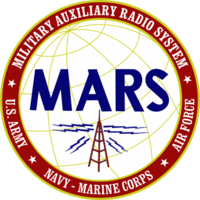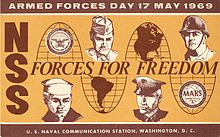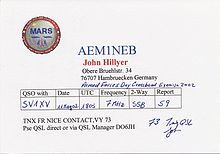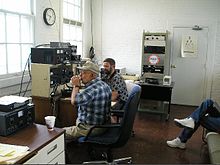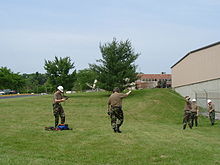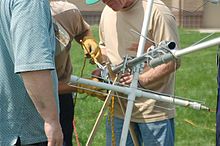The United States Armed Forces are the military forces of the United States. The armed forces consist of six service branches: the Army, Marine Corps, Navy, Air Force, Space Force, and Coast Guard. All six armed services are among the eight uniformed services of the United States, along with the U.S. Public Health Service Commissioned Corps and the NOAA Commissioned Officer Corps.
The United States has eight federal uniformed services that commission officers as defined by Title 10 and subsequently structured and organized by Titles 10, 14, 32, 33, and 42 of the U.S. Code.

The Military Sealift Command (MSC) is an organization that controls the replenishment and military transport ships of the United States Navy. Military Sealift Command has the responsibility for providing sealift and ocean transportation for all US military services as well as for other government agencies. It first came into existence on 9 July 1949 when the Military Sea Transportation Service (MSTS) became solely responsible for the Department of Defense's ocean transport needs. The MSTS was renamed the Military Sealift Command in 1970.
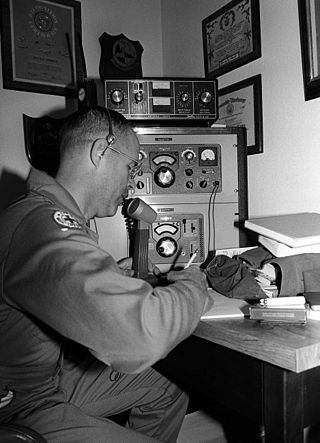
Auxiliaries are support personnel that assist the military or police but are organised differently from regular forces. Auxiliary may be military volunteers undertaking support functions or performing certain duties such as garrison troops, usually on a part-time basis. Unlike a military reserve force, an auxiliary force does not necessarily have the same degree of training or ranking structure as regular soldiers, and it may or may not be integrated into a fighting force. Some auxiliaries, however, are militias composed of former active duty military personnel and actually have better training and combat experience than their regular counterparts.

Buckley Space Force Base is a United States Space Force base in Aurora, Colorado named after United States Army Air Service First Lieutenant John Harold Buckley. The base is run by Space Base Delta 2, with major units including the U.S. Space Force's Space Delta 4, the Colorado Air National Guard's 140th Wing, the Denver Naval Operations Support Center, and the National Reconnaissance Office's Aerospace Data Facility-Colorado.

The White House Communications Agency (WHCA), originally known as the White House Signal Corps (WHSC) and then the White House Signal Detachment (WHSD), was officially formed by the United States Department of War on March 25, 1942 under President Franklin D. Roosevelt. The organization was created to provide secure normal, secret, and emergency communications requirements supporting the president. The organization provided mobile radio, Teletype, telegraph, telephone and cryptographic aides in the White House and at "Shangri-La". The organizational mission was to provide a premier communication system enabling the president to lead the nation effectively.

In times of crisis and natural disasters, amateur radio is often used as a means of emergency communication when wireline, cell phones and other conventional means of communications fail.

Bellows Air Force Station is a United States military reservation located in Waimanalo, Hawaii. Once an important air field during World War II, the reservation now serves as a military training area and recreation area for active and retired military and civilian employees of the Department of Defense. Bellows AFS is operated by Detachment 2, 18th Force Support Squadron of the 18th Mission Support Group based at Kadena Air Base, Okinawa, Japan. Located on the opposite side of Oahu is the similar Pililaau Army Recreation Center, part of the Armed Forces Recreation Centers system.
Public affairs is a term for the formal offices of the branches of the United States Department of Defense whose purpose is to deal with the media and community issues. The term is also used for numerous media relations offices that are created by the U.S. military for more specific limited purposes. Public affairs offices are staffed by a combination of officers, enlisted personnel, civilian officials and contract professionals.
A radiogram is a formal written message transmitted by radio. Also known as a radio telegram or radio telegraphic message, radiograms use a standardized message format, form and radiotelephone and/or radiotelegraph transmission procedures. These procedures typically provide a means of transmitting the content of the messages without including the names of the various headers and message sections, so as to minimize the time needed to transmit messages over limited and/or congested radio channels. Various formats have been used historically by maritime radio services, military organizations, and Amateur Radio organizations.

United States Department of Defense Police are the uniformed civilian security police officers of the United States Department of Defense (DoD), various branches of the United States Armed Forces, or DoD agencies.
The reserve components of the United States Armed Forces are military organizations whose members generally perform a minimum of 39 days of military duty per year and who augment the active duty military when necessary. The reserve components are also referred to collectively as the National Guard and Reserve.

The United States Department of Defense (DoD) has a complex organizational structure. It includes the Army, Navy, the Marine Corps, Air Force, Space Force, the Unified combatant commands, U.S. elements of multinational commands, as well as non-combat agencies such as the Defense Intelligence Agency and the National Security Agency. The DoD's annual budget was roughly US$496.1 billion in 2015. This figure is the base amount and does not include the $64.3 billion spent on "War/Non-War Supplementals". Including those items brings the total to $560.6 billion for 2015.
The Judge Advocate General's Corps is the military justice branch or specialty of the United States Air Force, Army, Coast Guard, Marine Corps, and Navy. Officers serving in the JAG Corps are typically called judge advocates.
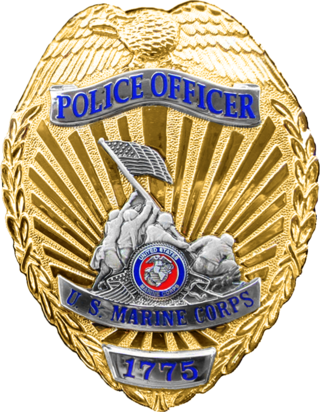
The United States Marine Corps Civilian Police is the civilian law enforcement agency of the United States Marine Corps. Officially called the "Marine Corps Law Enforcement Program" (MCLEP), the agency is composed of civilian (non-military) federal police officers.

The United States Space Force (USSF) is the United States Armed Forces' space service and one of the eight uniformed services of the United States. It is one of two independent space forces in the world, alongside the Chinese People's Liberation Army Aerospace Force.
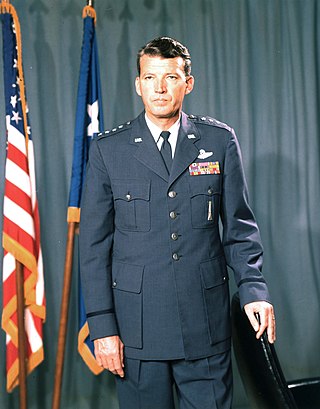
While the United States Space Force gained its independence on 20 December 2019, the history of the United States Space Force can be traced back to the beginnings of the military space program following the conclusion of the Second World War in 1945. Early military space development was begun within the United States Army Air Forces by General Henry H. Arnold, who identified space as a crucial military arena decades before the first spaceflight. Gaining its independence from the Army on 18 September 1947, the United States Air Force began development of military space and ballistic missile programs, while also competing with the United States Army and United States Navy for the space mission.
The United States Department of the Navy Police is the uniformed security police program of the United States Navy. It provides professional, civilian, federal police officers to serve and protect U.S. Navy personnel, properties, and installations. DoN Police personnel represent the Department of the Navy's contribution to the Department of Defense Police program. DoN Police officers primarily work alongside U.S. Navy masters-at-arms, the military police of the U.S. Navy. Although under the Department of the Navy, the United States Marine Corps (USMC) maintains its own civilian law enforcement program for Marine Corps-centric installations, the USMC Civilian Police. Despite both employing civilian special agents, neither the Naval Criminal Investigative Service nor the USMC Criminal Investigation Division fall-under the auspices of the DoN/DoD Police; both agencies have their own chains of command.
